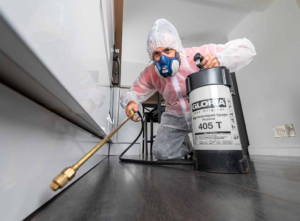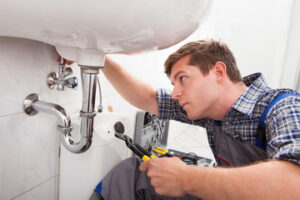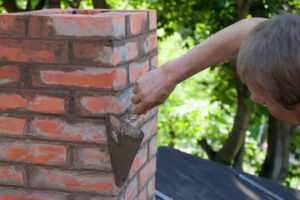Pests are more than just a nuisance; they can cause damage, threaten health and safety, and decrease property value. Routine pest control services can prevent damage, preserve property value, and protect family and pet health.
Whether targeting residential or commercial clients or offering specific pest control services such as removing snakes or rats from chimneys, start with a business plan to help guide your growth and success. Contact Pest Control Mesquite TX now!

Accurate pest identification is the first step in managing any pest problem. Without it, a pest control program can fail due to inappropriate or ineffective treatment or because the need for pesticides may be underestimated. Correct pest identification can also make the application of nontoxic controls easier and more successful.
There are a number of ways to identify pests, including examining the pest for key characteristics such as antennae or body segments and searching for specific identifying marks or coloration. In addition, it’s often helpful to look at a reference gallery of the pest in question to get an idea of what it looks like in order to compare it to what you see in your facility.
If a facility manager is not sure of what they are seeing, they can contact a professional pest management expert or a local commodity or crop association to ask for help identifying a pest. Generally, these individuals can help determine basic pest information such as the type of pest, what foods they feed on, their damage cycles and other important biological or behavioral clues.
Once a pest has been correctly identified, the next step is to locate the source of the infestation. Pests can enter facilities through a variety of means, including gaps around doors and windows, unlocked or open doors and windows, cracks in walls and foundations, and items brought into the facility such as used furniture or grocery bags.
Identifying the location of an infestation can help to direct the search for the pest’s breeding or overwintering sites. Insects and arachnids can breed and overwinter in a wide variety of locations, from piles of debris to mud or compost to cluttered basements or storage areas. Identifying these sites can help to direct the search for their adult overwintering site and allow the use of appropriate control tactics.
Pests that are able to survive indoors must have food sources and shelter in order to thrive. For example, rodents need to gnaw in order to keep their teeth from overgrowing, so chewed-up food packaging and wires are often a clear indication of the presence of rats or mice. Inspect a facility’s storage and cluttered areas regularly to locate and remove pest hiding places.
Identifying the Source of the Problem
If pests are allowed to proliferate, they can eat away at the food supply, damage crops, spread disease or simply interfere with human activities. They may also carry a range of other dangers, such as rodents chewing on wires in your home which can result in fire or electrical problems, or insects that bite and sting. Moreover, they can cause damage to the environment and the natural habitat of plants and animals.
Threshold-based decision-making is the process of assessing when it’s time to take action on a particular pest problem. For example, seeing a few wasps occasionally is not enough to warrant control measures, but if you see them regularly and in increasing numbers it’s probably time to get rid of their nest. Likewise, an infestation of fleas is more than an annoying nuisance, and should be treated immediately before the problem worsens.
There are often several options to reduce the number of pests before resorting to chemical control methods. Nonchemical approaches include cultural practices such as good sanitation, removing debris and infested plant material, crop rotation, soil solarization, and growing pest resistant varieties. There are also mechanical or physical controls such as traps, screens, barriers, fences, and the use of radiation or heat to control some pest populations.
In some cases, the presence of a pest can be controlled without using chemicals by encouraging the population of its natural enemies, such as parasites and predators. The ability of natural enemies to control pests usually depends on a number of environmental factors, such as climate, available food and water, and the availability of shelter. In many enclosed environments, such as greenhouses and in indoor agriculture (where food processing, health care, and office buildings are located), the need for pesticides is a constant concern.
The most important thing you can do to reduce your risk of exposure to dangerous chemical pesticides is to ensure that you’ve done all you can to prevent the pests from entering your property in the first place. Keep your home clean and free of clutter, keep garbage cans tightly closed, and trim bushes and trees to stop them from providing places for pests to hide or build nests.
Identifying the Type of Pest
The pest must be identified accurately to choose the appropriate control measures. This includes knowing its size, color and behavior as well as the type of damage it is causing. The physical appearance of a pest can change significantly with its stage in the life cycle or time of year. It can also change with the environment or type of host it is attacking.
For example, a weed seedling looks very different than a mature weed. A young plant may have holes or speckles in the leaves, while an adult weed has a full, bushy growth pattern. In addition, many pests have a very specific diet and will only feed on certain types of plants or crops. Knowing the type of crop that a pest targets can help narrow down the list of possible pests to attack it.
In agriculture, identifying the pest is essential to choosing the most effective pesticide. Pesticides are designed to target particular organisms and are most effective when used in conjunction with other controls such as cultural practices or mechanical removal of the pest. Having a clear understanding of the pest’s life cycle, food sources and habitat can also be important for developing a successful management plan.
Rodents, such as rats and mice, are a common household pest. These rodents are known for their sharp incisors that cause gnawing damage to buildings and wiring. Signs of a rodent infestation include droppings, gnaw marks and scratching sounds in the walls and attic.
To keep rodents from damaging your home or business, a professional can provide recommendations for exclusion strategies such as tight windows, screens over vents and caulking cracks. Inside your home, swat or vacuum flies, place trash in sealed containers and dehumidify the area to reduce moisture and attractants.
Infestations of pests that pose a health risk to humans can have negative repercussions for a company and its customers. It is critical to identify the pest species and understand how it affects people’s health and safety. Getting to know the pests and their preferred environments, habitats, feeding habits and other characteristics can help prevent or limit pest populations without putting the public at risk of illness or injury.
Developing a Treatment Plan
After assessing the type of pest and its severity, a licensed professional will devise a treatment plan to eliminate it. The plan will take into account prevention and treatment options to minimize risks to humans, animals, plants and the environment. It will also include recommendations for ongoing maintenance.
The treatment plan will start with an in-depth inspection of the property by a trained technician. He or she will look for signs of the pest, as well as their food, water and shelter sources. The technician will also identify any potential entry points into a building, such as cracks or holes.
Preventive measures can be used to create barriers that prevent pests from getting near a home or structure. These include minimizing food attractants, keeping garbage receptacles tightly closed and removing any sheltered areas that could provide nesting sites for insects or rodents. Barriers can also include installing screens over windows and doors, sealing cracks in walls and floors, and using wire mesh on vent openings and pipes.
Biological control methods utilize natural predators and pathogens to limit the growth of pest populations. These may include parasites that kill the host pest, disease organisms that infect a pest or their offspring, nonspecific insect predators (like beetles) that eat a range of species, and introduction/establishment of sterile males that interrupt reproduction cycles.
Chemical control uses pesticides to destroy or deter pests. These can be liquids, powders, aerosols or baits. They can be synthetic or organic, but must be chosen carefully to limit the risks to humans and the environment. They must also be applied correctly to be effective. This includes following proper safety precautions, such as not applying them during strong winds or heavy rains and avoiding contact with the skin, eyes, or mouth.
The plan will also include regular follow-up visits, which help to ensure the effectiveness of the treatment and detect any new pest activity before it becomes a full infestation. This routine work can save time and money, as it avoids the need for more expensive and time-consuming treatments.
The final step in the process is a review of the pest control strategy with the homeowner to make sure everyone is on the same page. This is a great opportunity for the pest control professional to explain his or her inspection report and answer any questions that the homeowner might have.







